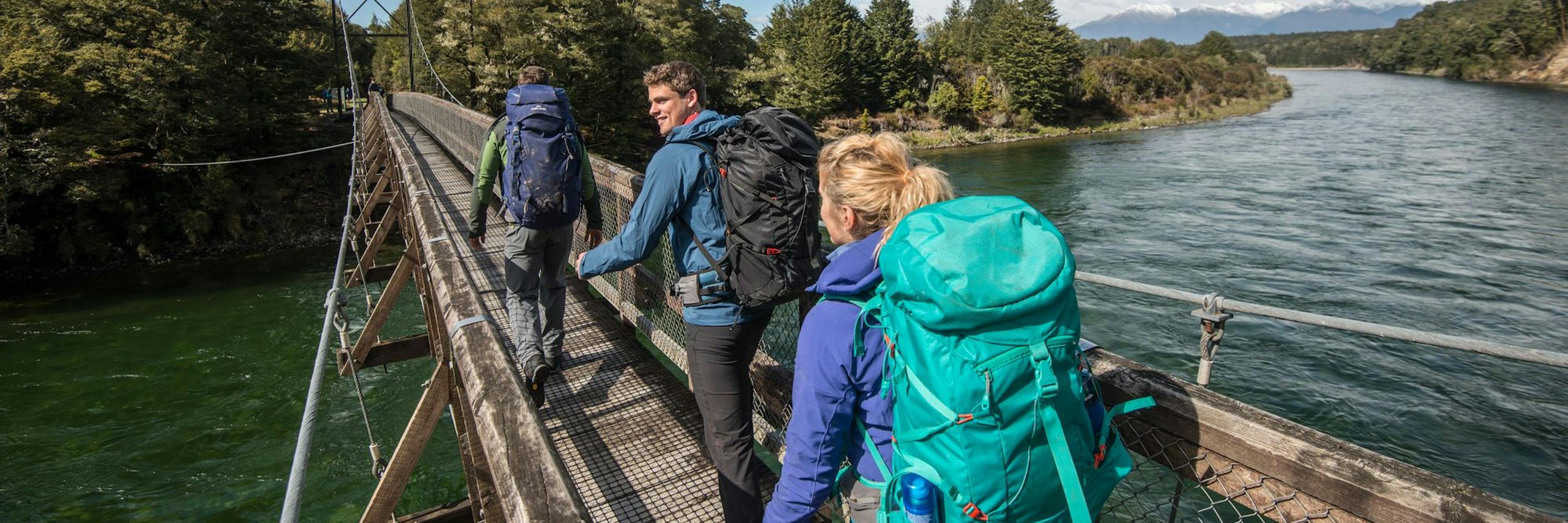There are a number of factors that influence what backpack is best for you. So let’s answer the above question with… two more questions.
- What activities are you going to do?
- How long are you going for?
With these two answers in mind, we can explore the pros and cons of each size.
BACKPACKS OF 35L AND LESS
HIKE:
Perfect for day hikes, a smaller backpack is generally lighter than a larger one, which makes it easier to carry through rugged terrain and navigate challenging trails. With a smaller backpack, you'll have better mobility and balance, which will your hike more enjoyable.
TRAVEL:
A small, zipped day pack makes for a solid small travel backpack choice. Besides keeping your valuables secure, you can bring everything you need for a day out, like extra layers, snacks, and water. A small backpack is also convenient carry-on luggage. The wheels and handles on a traditional carry-on suitcase can add additional weight and blow out those pesky luggage dimensions set by airlines. A backpack will help save on weight, space, and is extra packable in the overhead lockers.
BACKPACKS BETWEEN 35–50L
HIKE:
If you want to go on an overnight hike you’ll need a hiking backpack big enough to see you through the night. If you want to embrace the ‘packing light’ philosophy on multi-day hikes, this size will still work for you. You’ll need expensive light-weight gear to make this work, though. If you’re sure not that everything you need will fit, then choose a backpack that's 50L or larger.
TRAVEL:
Again, this is going to depend heavily on the actual gear going in your pack. This size can be enough for minimalist packers. A smaller bag means you’ll be forced to pack less and follow the philosophy of packing what you actually need – not a bad habit to get into.
But if you’re going to snow season and you want to pack your big fat ski jacket, then you may have to choose a bigger backpack. But if you’re about to spend a week in Byron Bay with little more than sunnies and togs, then this will suit you just fine.
BACKPACKS OF 50L AND UP
HIKE:
If you want to embark on a multi-day journey where you’ll be carrying everything you need to be self-suffice for days at a time then a 50L + bag is probably the best backpack for you. With backpacks this size, it is essential that they fit you properly.
TRAVEL:
A 50L+ backpack is a great friend to those travelling for a few weeks. These bags are spacious and can accommodate a number of outfit changes before you ever have to visit a laundromat. But don't be tempted to fill your pack to its capacity before you've even left - remember to save space for souvenirs!
PACKING A BACKPACK
Convenience and comfort are two key themes to bear in mind when packing.
Convenience: Pack your backpack with the items you won't use during the day at the bottom of your bag - think sleeping bag, pyjamas etc. Food, water and extra layers should be easily accessible.
Comfort: Keep items in your bag from affecting your centre of balance. Keep heavy items low and close to your back, so that they don't pull you sideways, backward or even too far forward (if you load heavy items up top, this will happen).
WEARING A BACKPACK
- Start with the waist belt of your backpack. Adjust it so that the padding of the waist belt cushions the top of your hips. You don't want all the weight of the bag solely on your hips, but the waist is vital for sharing the load. Adjust the waist belt so that it fits snuggly without strangling you.
- Move on to the shoulder straps - they should be firm but not too tight.
- Lastly, adjust the sternum straps - these ease the pressure on your shoulders by pulling the shoulder straps together slightly. They shouldn't be too tight, just enough to take some of the pressure off.
